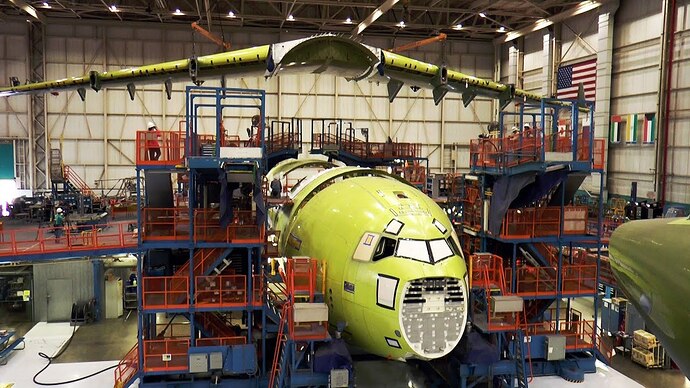It’s a great AC. Canada could probably use a few more.
I’m curious as to where they would resume production and if any of the old tooling & jigs exist still. The old facility at Long Beach where they were built is long gone.
Nice, scenic train ride to Everett?
Not Everett
As I recall, they would have likely destroyed those when done as part of the contract. Part of the reason why simple items cost so much is they have to create new tools and jigs for each run. The manufacturer passes the cost on to uncle sugar.
That would not surprise me. I saw when McDonnel Douglas and then Boeing shut down several plants (Torrance, Long Beach, Huntington Beach) aside from demolition of the facilities, they threw away tons of stuff such as art work, photos, etc. I know a few guys who went dumpster diving to get some of those items.
Usually “Special Tooling” is Government property and a separate deliverable line item in the contract. Either the company is paid a storage fee to keep it or it is shipped to one of the Army/Air/Naval depots.
About the only tooling that was deliberately destroyed (As opposed to being scrapped out because of economic considerations; it costs money to store things. Even then, much is kept because it can often be modified to use on the next project.) was the tooling for the Pershing II missile that was destroyed in accordance with the INF treaty.
In the early 80s my company had an order to make new Polaris A-3 solid rocket motors for the UK RN because the missiles we sold them in the 1960s had reached the end of their life. (When these early motors got old they started dripping nitroglycerin . . .) The program was the “A-3R”, meaning A-3 Replica. We were to make new motors exactly as they had been made 20 years earlier, with no changes to the materials or manufacturing methods except to reflect current safety requirements. The tooling had been stored out at a Hill AFB facility north of the Great Salt Lake Desert. My job as a tooling engineer was to refurb these tools, replace those that were damaged or had gone missing, and make new tools to suit facility and other equipment changes. ISTR that well above 85% of the tooling could be used with only minor refurbishment like reapplying teflon coatings, replacing nuts and bolts, and putting in new gaskets and seals.
KL
Yeah, no. The problem with that is it can take years to tool up for a project like the C-17, and, especially with aircraft, the nature of the tooling means that if you lose the tools the replacements you make produce parts that are not interchangeable with those made before.
Have you ever seen something like a fuselage or wing skin assembly or forming jig?
The three storey blue and red structure that extends well into the background is tooling. This is not cheap, readily reproducible, or scrapped with each order.
Small parts cost so much because of the structure of contracting. Every item has to carry its share of the project’s engineering costs, management costs, employee training costs, utilities, debt service, profit, and on and on, in addition to the actual costs to design, document, and produce the part in the typical far-below-economically-optimal quantities.
(As a sidebar, there were many times that economical production manufacturing methods were unavailable to us because of the small quantities involved. Production processes usually require some set-up and prove-out costs. Companies would not bother with orders that had $100k in start-up costs to produce 25 parts at $5k each, even when we offered to reimburse them for the start-up costs, plus a profit on their work.)
KL
